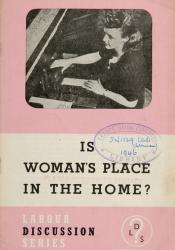Exodus of Working Women After WWII
After World War Two, millions of men returned home following the aftermath of the war. The men returned to the normalcy of their lives, going back to their jobs, and providing for their families; however, who was there to support the men whilst they were overseas, or fighting in their own countries? That answer is none other than the women of their nations, who stepped into action, providing the men at war with the rudiments required to win the war for the allies. When the men returned, the women enjoyed their newfound powers. They enjoyed working and making something of themselves: living without the help of the man. When the men returned, some women were outright fired. Others tried to stay, and people actively revolted. Employers would make unfair working situations, favoring the men, and the men would convince their wives to simply provide for the family and live at home. As a result, thousands of strikes occurred after World War Two to the 1970’s. One such strike was in 1956, where thousands of fish curers walk out after having been treated unfairly by their employer.
“The women complain that while men workers have already been awarded the five-day week and an increase in pay, there was no increase in pay for many women workers last Saturday.” Reads the body of a Times publication, titled “1,000 FISH CURERS ON STRIKE.” This was not abnormal for women to experience during this period. People did not like the empowerment that working at a job gave the women who were previously expected to simply work for the family. Many employers, men, and sexists rioted at working women, causing a sharp exodus of women from the work force. Many stayed, however, to mark their place, and economic fairness between men and women still appears to be a problem today (Women and Work After World War II). What started as an empowering movement for women to provide for their families alongside the men, turned into a violent conflict that saw many women leave the work force or suffer while in it.
While many women left the work force after the war, it seemed to stagnate in the 1950’s leading to an increase in the percentage of overall women in the workforce by the 1960’s, where 51 percent of working age women were in the labor force (Striking Women). Many women left the workforce due to “Marriage bars,” which prevented married women from working a host of different occupations (Striking Women). While many fought in strikes, many acquiesced, contributing to the problem of societal gender roles, and keeping women in a lower position of power compared to men. However, the efforts of the diligent women who stayed were not in vain, as now, women and men are practically equal in the labor force because of them, and while women work some jobs disproportionately compared to men, at least they are encouraged by society to participate in whatever they desire. One day may women all over the world don the same position as men no matter what they try to do, in labor, or in the home, and vice versa for the men who simply wish to work for the household.
Related Links
The Stonewall Riots, The Stonewall Uprising, The Stonewall Rebellion, or Simply, Stonewall
Works Cited
American Experience. “Women and Work After World War II.” American Experience | PBS, 14 Feb. 2018, www.pbs.org/wgbh/americanexperience/features/tupperware-work.
FROM OUR CORRESPONDENT. "1,000 Fish Curers On Strike." Times, 15 Aug. 1956, p. 4. The Times Digital Archive, link.gale.com/apps/doc/CS68769551/TTDA?u=iulib_iupui&sid=bookmark-TTDA&xid=5e8641c9. Accessed 1 May 2022.
“Post World War II: 1946–1970 | Striking Women.” Striking Women, www.striking-women.org/module/women-and-work/post-world-war-ii-1946-1970. Accessed 1 May 2022.

